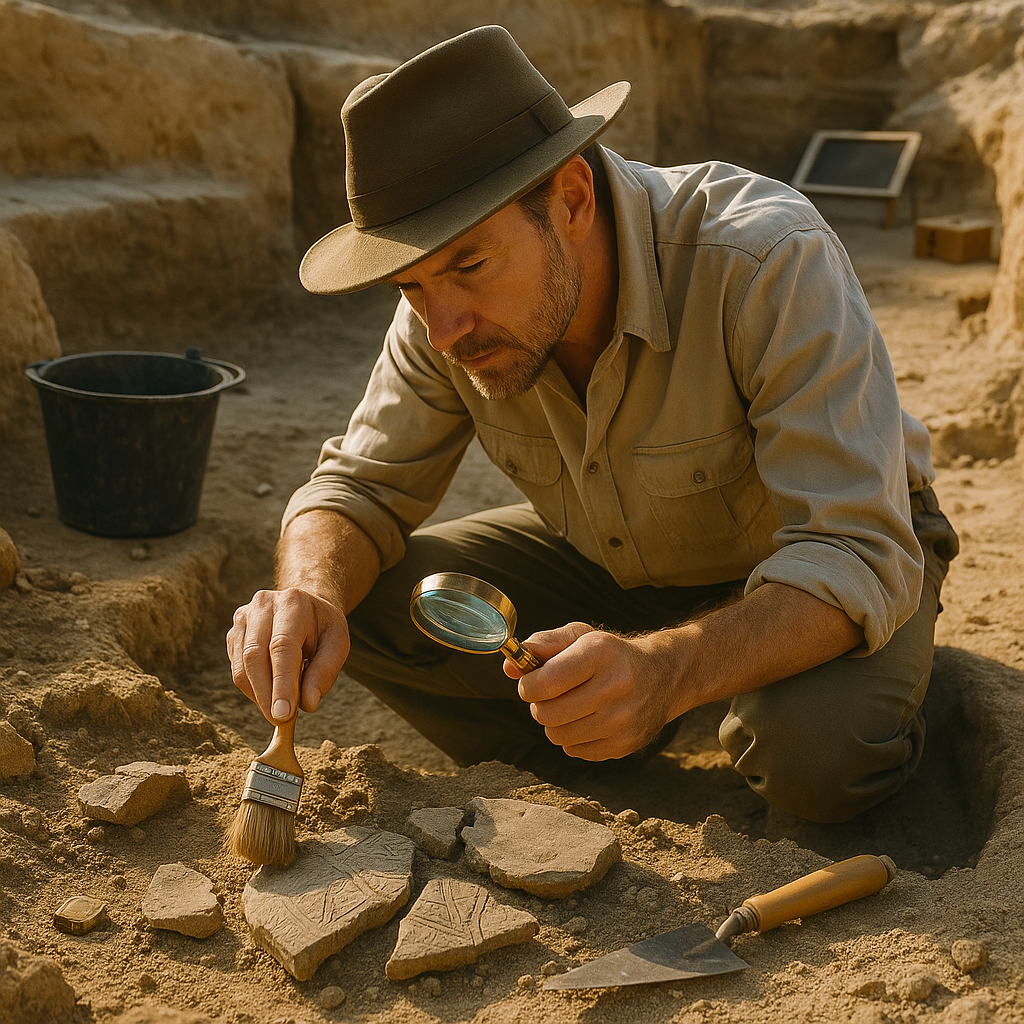Lesson 1: Studying History (Uncovering the Past)
📚 What Is History?
History is the story of the past. It tells us what happened to people, places, and the world. It answers questions like:
Who lived here before?
What did they eat?
Why did they fight or work together?
👀 History helps us see the past, even though we were not there.
🧔 Long ago, there were no phones, no videos, no pictures. So how do we know about the past?
🏺 What Is Archaeology?
Archaeology is like a treasure hunt! 🪙
Archaeologists are people who dig in the ground to find old things. These things are called artifacts. They can be tools, bones, coins, or broken pots. 🏺
Fun Fact: In 1922, Howard Carter found the tomb of a young Egyptian king named Tutankhamun. Inside were gold masks, jewels, and even his bed! The tomb was over 3,000 years old!
🪨 Geology and History
Geologists study rocks and the Earth. 🌍
Sometimes, rocks can help us understand the past. For example:
🦴 In Tanzania, Africa, scientists found footprints made 3.6 million years ago! The footprints were in hard rock. These footprints helped scientists understand how early humans walked.
🧠 Understanding Through History
🧍♂️ Know Yourself
History helps us understand who we are.
Maybe your family came from a different country. Maybe your grandparents lived during a war or a big change. Their stories are part of your story too! 📖
🧑🤝🧑 Know Others
When we study the past of other people, we learn to respect them. We understand why they do things in a different way.
👳🏽♂️🧕 For example, the ancient Persians were great builders and kind rulers. They let people keep their language and religion. This helped their empire stay strong.
🌍 Know Your World
History shows how our world changed.
🏙️ Did you know that Rome started as a small village? It grew into a big empire and gave us roads, laws, and even the word “senate.”
🕵️♂️ Using Clues from the Past
Historians are like detectives. They look for clues.
There are two main kinds of clues:
📜 Sources of Information
These are written or made in the past.
Old books and letters
Drawings on cave walls 🖼️
Government papers
Maps
📖 One letter from a Roman soldier tells us he missed his mom and wanted more socks!
🕵️♀️ Primary and Secondary Sources
Imagine you're a history detective! 🕵️♂️ You want to learn about a big event, like a famous battle or a king’s rule. You need clues. These clues come in two types:
📜 Primary Sources
Primary sources are from the time of the event. They are first-hand.
They include:
Letters ✉️
Diaries 📔
Photos 📸
Clothes 👗
Tools 🛠️
Buildings 🏰
💬 Example: A soldier’s letter from World War II saying, “It is cold in the camp, and I miss home.” That’s a primary source — the soldier was there!
📘 Secondary Sources
Secondary sources are about the past but made later.
They include:
Textbooks 📚
Documentaries 🎥
Articles and blogs 📰
💬 Example: A modern book that explains what happened in World War II. The writer wasn’t there — but they used primary sources to tell the story.
🎯 Quick Trick:
Primary = First-hand
Secondary = Second-hand
Both are important! Primary sources show the real voice of the past. Secondary sources help us understand it better.
🔁 Sources of Change
These are things that made history move forward.
🌽 A big change was when people learned to grow food (the Agricultural Revolution). Before that, people moved around to hunt. Now they could build villages!
🌟 Why It Matters
Studying history is not just about old dates or names. It is about people — like YOU — who lived, loved, worked, and dreamed.
It helps us:
Make good choices
Avoid big mistakes from the past
Understand our place in the world
🌍 As one teacher said: “History is not about the past. It’s about understanding today.”
